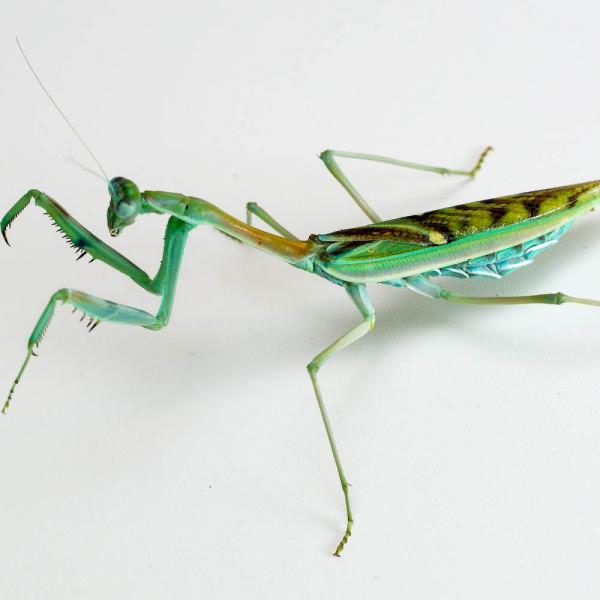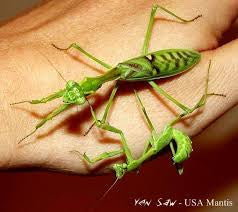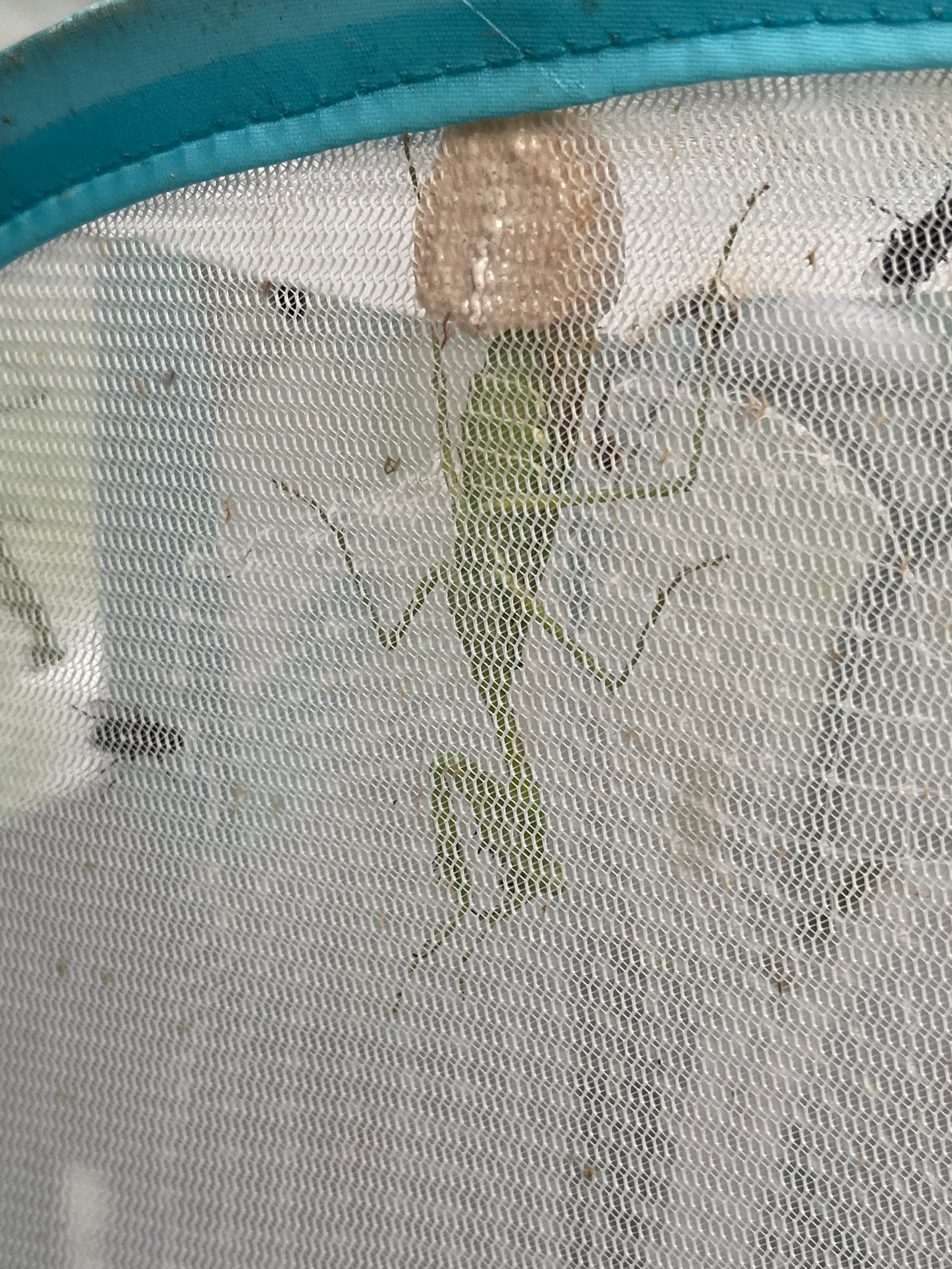














Omomantis zebrata Zebra mantis beautiful!
$35.00 - $150.00
Zebra praying mantis, O. zebrata. South Africa (IGM-Nr. 176). According to Ehrmann this species occurs in the soutafrican provinces Cape Province, Natal and Transvaal, in Zimbabwe and Kenia. The huge gap between the southern area of distribution and Kenia strikes the eye. It is not clear whether no populations of Omomantis zebrata in the inner countries of this gap have been found, or it has been brought to Kenia by man.
Appearance and sexual dimorphism
Omomantis zebrata is a medium sized species of mantid. Both sexes reach up to 6 cm in bodysize, where males stay a little more slender. The species belongs to the "normal type" and shows no morphological peculiarities such as a vertex elongation or lobes. The base color can reach from a light to a deep and shiny green to a turquoise-green. The upper side of the femura and the dorsal side of the pronotum are colored in a reddish brown. The coloration of the wings is stands out, it shows a black patterns and two white dots on a green surface. The habitus of Omomantis zebrata is rather gracile, rather strinking are the long and thin walking legs.
The sexes of juveniles can easily be distinguished by counting abdominal segments, the females have 6 of them, the males 8.
Behavior
Omomantis zebrata is a calm species, that can nevertheless react nervously when disturbed over longer periods of time. This is most present in juveniles, a little less in adults. The latter mostly remain in one spot for days on end and wait for prey, as it is common for most mantids. While waiting, they move do not move towards the prey but wait for the prey to come closer. Flying insects like flies and moths are caught mid-air without a problem.
I could not observe any flight attemps, but it can be assumed that at least the males are skilled fliers due to their gracile habitus.
The aggression towards members of the same species is close to nonexistent. Therefore males and females can be kept in bigger groups if fed properly. Cannibalism in general only occurs when too little prey is present. To be sure, one should seperate adults into groups of the same sex to prevent the females from eating the delicate males.
Keeping conditions
The minimal size for a container is about 20x20x30 cm. Since these animals have very long legs, they need a good deal of room for molting. When several specimen are about to be kept the container should be bigger, at least 20x20x40cm, since the adults are not that small. The container should contain twigs (not too thick), coco fiber can be used as substrat. Since Omomantis zebrata occurs in savannas it is sufficient to moisten the substrat every 3 days. I have never let it dry out completely to not let the humidity drop too low.
Temperatures of about 25 ° to 28 °C during day should be reached, but not any higher. It is ideal to produce a slope of different temperatures in the container to make sure the animals can choose the right spot. A drop to about 20 °C during night is to be aimed for.
The animals can be fed with flying insects like bottle flies, blowflies and moths.
Mating and raising the young
The nymphs can be kept in the same conditions as the adults. Since this species is social the young needn't be seperated. They can be raised in groups, again when fed properly. Sexing them is possible in L3 to L4.
The larvae of Omomantis zebrata in the first states can be fed with Drosophila hydei until they are big enough to prey on blue bottle flies. Firebrats are fit, too, especially between the prediods of feeding D. hydei and bigger flies.
Mating Omomantis zebrata is relatively easy species to keep. The females are sexually mature after 4 weeks, the males after about 2 to 3 weeks. The oothecae should be yielded at about 30 °C and a relatively high humidity, the young will hatch about 4 to 6 weeks later - about 20 to 30 specimen per litter.
Diagnosis
This species is easy to keep and in addition nice to look at, which makes it good tip for beginners. Due to their size some space is needed to keep them, when one wants to seperate them, however, breeding this species is not much of a problem with the proper care.













